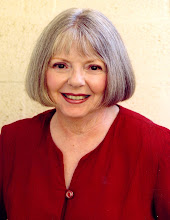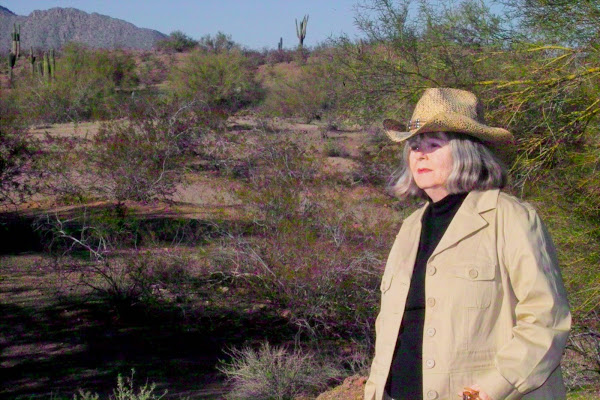Besides being the author of several mystery novels, I also review
books for Mystery Scene Magazine and teach creative writing, so you could say
that books comprise a large section of my life. When a character trend
emerges – or disappears – I notice. Yet in my thirty years of professional
writing, teaching, and critiquing, I am continually plagued by one character stereotype
that just won’t go away.
The weepy female.
The novel’s genre doesn’t seem to matter: literary, mainstream, mystery,
thriller, sci-fi, Western, or (of course) romance. Regardless of the book’s genre,
the cast list usually includes at least one female character who bursts into
tears on a regular basis, whether from joy, sadness, fear, shock, or frustration
at missing the last pair of Tommy Choo knock-offs at Macy’s Spring Shoe Sale.
Why, for God’s sake?
In an age where women have been cleared for combat, and are
coming home from Iraq and Afghanistan minus arms and/or legs, why this continuing
insistence on weepy female characters?
When one of my students recently turned in a suspense novel
where the female protagonist fainted twice and cried eight times (I counted), I
took her to task for creating such a stereotypical character.
“But everybody knows women cry a lot,” my student answered.
Intrigued, I asked her when was the last time she’d cried, but
after several moments, she said she couldn’t remember. She wasn’t much of a “crier,”
she admitted.
“I’m not, either,” I said. “Nor are any of the other women I
know. Maybe we tear up while watching a sad movie, but we don’t have time do
that in real life. When a real life problem come along, we deal with the
situation, we don't cry about it.”I told her to rewrite each crying scene so that her protagonist never shed a single tear, regardless of what was going on in the scene. And to take out the fainting. While not happy about this, she finally agreed to do it. A few weeks later, she handed in the rewrite.
Guess what?
When all the facile blubbering had been removed, my student had been forced
to write more deeply, to delve more completely into her character’s psyche --
to actually deal with her heroine’s emotional and intellectual complications
instead of avoiding them. Gone were the dull, knee-jerk tears, gone was the cheap
and easy sexist stereotyping. The result was a complex, many-layered heroine
who dealt much more realistically with her internal demons while grappling with
the book’s already complex, many-layered male villain.
The heroine had transitioned from a shallow, cardboard character
into someone memorable. Someone real.
The world has changed and our female characters must change
with it. We are no longer living in the Victorian age, where -- because of
too-tight corsets -- women actually did weep and faint, although I’m sure it happened
much less often than writers of the time would have us believe. We are now living in the
21st century, where real-life women shoulder their assault rifles
and head off into combat.
And they’re not crying about it. 









7 comments:
Absolutely agree, Betty. Fewer women than ever see themselves as victims. We should take that into account when we structure our novels. Great post.
Karen Casey Fitzjerrell
Author of:
The Dividing Season
2013 Epic Award Winner
Good post. The women in early westerns that I've been reading rarely break into tears either. I'm talking 1880-1915, half of that period being Victorian era. They ride horses astride, are free and independent spirits; some are even good with ropes and guns. They are often contrasted with the fragile products of "civilization" back East, which is where westerners would expect to find the crying and fainting.
Ron, that was the thing about ranch women as portrayed in most Westerns. They were tough as nails and didn't bother to hide it. Unfortunately, when romance novels discovered the "Western" woman, she was sometimes written more Victorian. Hopefully, that's beginning to change.
I totally agree, Betty. I also detest the screaming female -- you know the one, she's facing certain death, she knows it, but all she does is curl up and scream. She does nothing to fight her killer, which goes totally against natural instinct, which wants to survive above all else. I want to see females who show some backbone and go down fighting.
Pat & Karen -- so right! Times have changed, and for writers to ignore how women have changed with them is just plain silly. Besides women soldiers, we have women firefighters, women cops, and women everything else. Yet some sloppy writers keep having their female protagonists act like hysterical Victorians. Ugh.
And sometimes it's just lazy writing. It's not just weepy females, but a range of stereotypical behavior, like the manly man who stares out over the landscape repeatedly in order to hide his feelings or people who sign every other paragraph. I totally agree with the approach to make someone really examine what they want the character to be and write accordingly instead of resorting to behavioral cliches.
Very interesting blog!
I decided to check out this blog. I love a good reaad. But this one was better than good. I totally agree. Two of my books have women as the min character and I promise they are not criers. As a matter of fact, I think the reader cries for them. Either in joy, pain, or triumph. I love to read. But please, I agree with Betty. Don't give me a soppy shirt, nose running, broken down woman. We just don't act like that in the real world.
Post a Comment